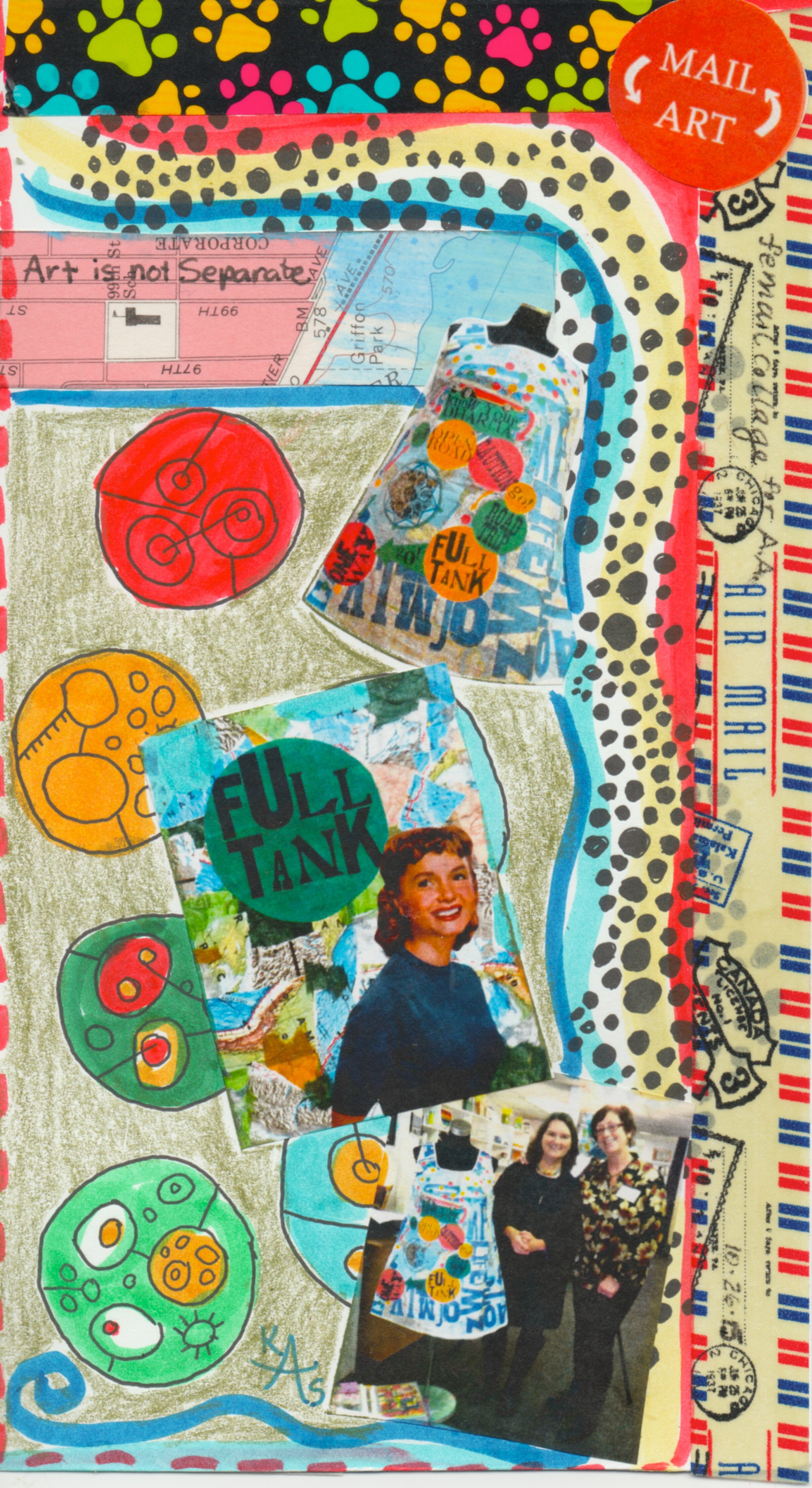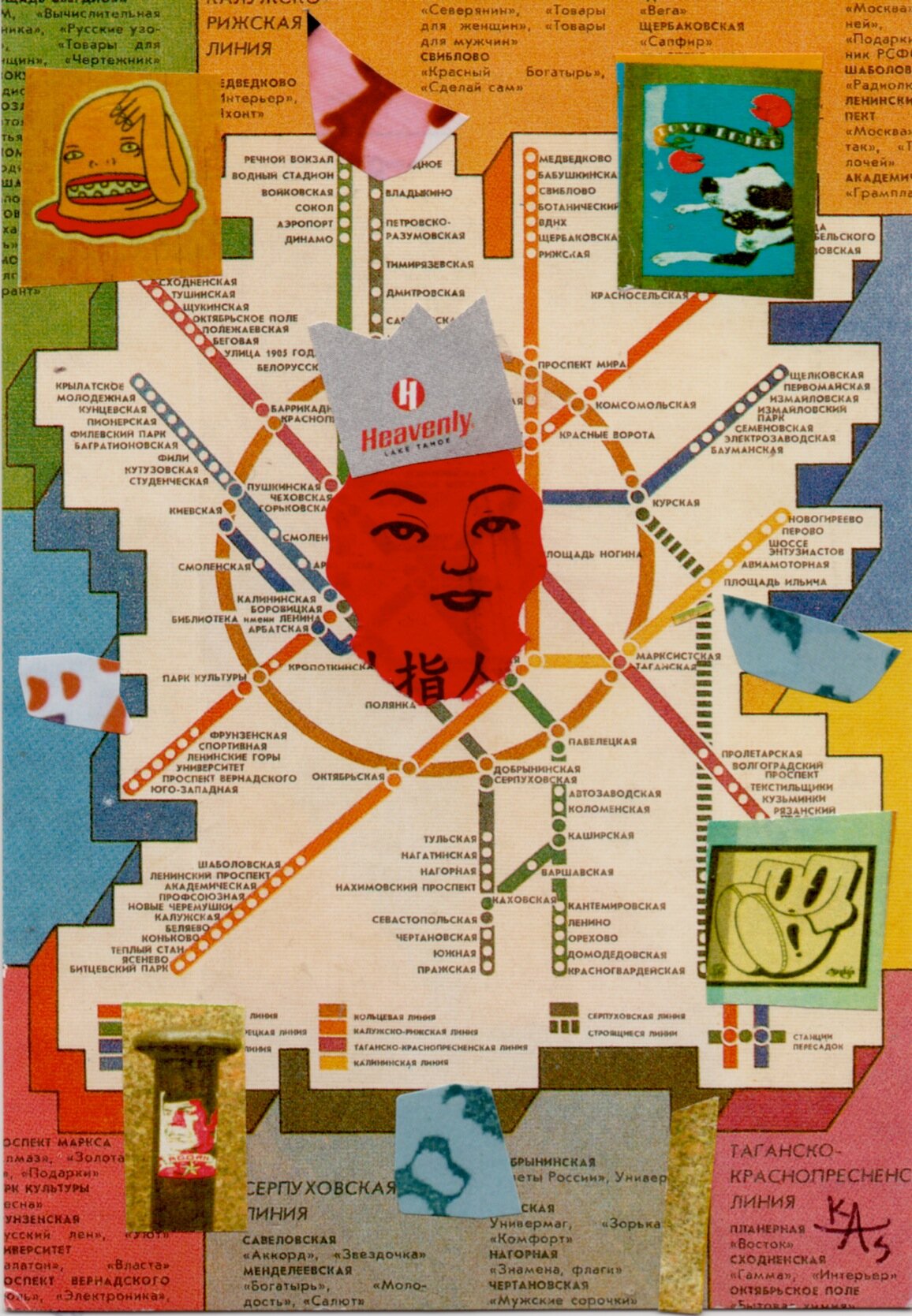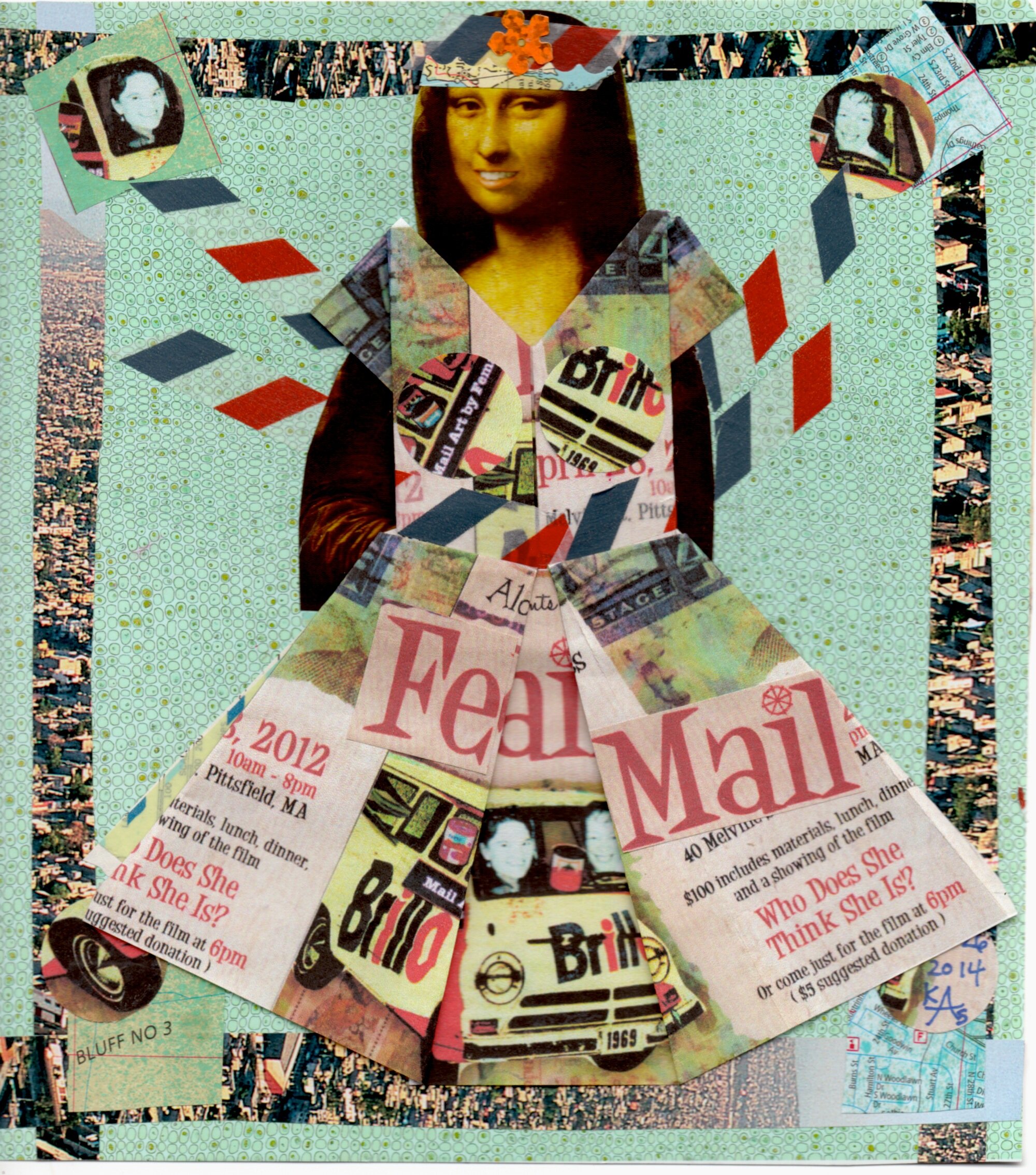FeMail Post Card Art
In the Mail Art movement, the world of the written word, post cards, correspondence and communication between artists is of utmost importance. For the price of a postage stamp, mail art can travel anywhere — to the other side of town or across international borders thousands of miles away.
Read more +
I love mail. I love to travel and seek out Postal Offices around the world. I love postage stamps and collect them. Post cards and their historical impact fascinate me. Post cards are like snapshots that preserve our memories or celebrate moments. I view them as artifacts that reveal social archeology. These postal elements are ingredients that contribute to my passion for mail art.
As a little girl I recall making my own stationary and decorating envelopes to mail to pen pals.
In high school and college I became a dedicated correspondent; writing letters, sending poems and sketches, documenting life as I lived it. Over the decades I perfected a humorous collage photocopy style which dramatically increased the volume of my mailings.
My first formal postal art project was called 100 Post Cards: The Curious Tourist Project. My sister and I invented a mail art game, inspired by the mail artist Ray Johnson, in which we would collaborate over the course of 52 weeks. The rules of the game required that we each mail one original collage post card to each other once a week for a year. Each collage post card received would be altered by the receiver with additional collage elements and mailed back to the sender. The result was a set of funny, pop art inflected, post card size artworks. Each one is an additive collaboration embodying the visual dialogue between sisters living 3,000 miles apart, in Oregon and New York. This took place between 2000–2001 during the time before and after 911. Interestingly, during that period with the rise of terrorism and the anthrax scare, postal systems published new guidelines for suspicious mail. My artist sister, Mary Arp, and I enjoyed pushing the mail art envelope, with our rebellious, experimental style. Some elements of our post card production changed after 911, while the radical essence of our communiqué became stronger. The Curious Tourist Project is a time capsule of history, our bond of sisterhood and a transitional time in my life.
By making art every day, often re-using the stuff of everyday living, I developed my collage-a-day practice. I learned the key to mail art is that it is designed to be seen along the way by everyone who touches it. I embraced the way mail art was so egalitarian, taking art off its pedestal. I joined the International Union of Mail Artists (IUOMA) and found the snail mail revolution.
In 2007 I began a mail art correspondence that continues to this day and has expanded into a mail art network. FeMail was born as a collage post card exchange across the state line between NY and MA, with my collage student and dear friend, Suzi Banks Baum.
During this long-term collaboration I embraced collage art as true communication. I devoted myself to collage as a daily practice. I viewed daily creative practice as positive action in the world. Over the years that we sent our art post cards to each other in the mail, I learned how to transform the ordinary into the extraordinary. I learned that art is not separate from life, rather it is a way of making a life. After three years, or roughly 1000 days of correspondence, we curated an exhibition and named our process FeMail.
FeMail is mail art by females. It represents our authentic feminine voices. It captures the struggles and joys of the working woman, motherhood, and universal female experience. Through mostly visual dialogue, the post cards take us on a journey to places, life events, milestones, and spiritual inquiry. The written word is included as graphic element, as poetry and quotation, and as affectionate notes. FeMail, which started as the dynamic duo Karen and Suzi, is now a mail art community without borders.
FeMail is created using scissors, glue, paper, and post cards. Anyone can do it.
I enjoy teaching mail art workshops to introduce people to my favorite techniques and tricks for making artistic folded envelopes, post card collages, illustrated envelopes, and collage cards. This is how the FeMail Art Network began its expansion to include hundreds of correspondents around the globe in the mail art movement.






























